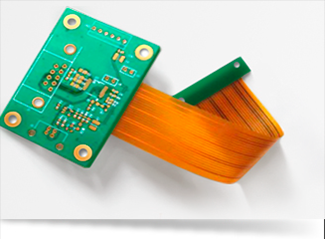The world of electronics is ever-evolving, with newer technologies paving the way for more compact, robust, and high-performance devices. At the heart of many modern electronic innovations are flex rigid PCBs (Printed Circuit Boards) which combine the flexibility of flexible PCBs with the durability of rigid PCBs. This unique combination makes them crucial in various applications, ranging from aerospace to consumer electronics. In this article, we will explore the nuances of flex rigid PCBs, the role of manufacturers, and how they cater to diverse application requirements with high-quality service and product offerings.

Flex rigid PCBs, or rigid-flex circuit boards, are hybrid constructions consisting of rigid and flexible substrates laminated together into a single structure. They are designed to provide higher component density and quality assurance in complex electronic applications. The rigid components provide the mechanical rigidity required for mounting heavy components, while the flexible parts facilitate bending and folding necessary for compact assemblies.
Manufacturers specializing in flex and rigid flex circuits play a pivotal role in the electronics industry. Their expertise lies not just in producing these circuit boards but in offering tailor-made solutions that fit specific project needs. Here’s what these manufacturers typically focus on:
Flex PCB Design: The design of flexible PCBs involves choosing the right type of flex, determining the conductive layer configuration, and selecting flexible materials that can withstand repeated bending. Good design is crucial for performance and reliability.
High Quality Production: Rigid flex PCB manufacturers ensure high-quality standards through rigorous testing and quality control measures. This includes everything from the raw materials used to the final inspection of the PCBs.
Customer Service: Excellent customer service ensures that all client queries about flexible circuit designs, types of materials used, and production capabilities are answered promptly and thoroughly.
Application Requirements: Each application might require a different type of flex, thickness, or method of integration. Manufacturers need to be adept at adapting their processes to meet these varied requirements.
PCB Assembly: This involves the assembly of electronic components onto the PCB itself. Manufacturers offering PCB assembly services must handle both small-scale prototypes and large production quantities with equal proficiency.
Turnaround Times: In a fast-paced market, the speed of delivery can be as crucial as the quality of the PCBs. Manufacturers must balance rapid turnaround times with maintaining high-quality standards.
When selecting a rigid flex PCB manufacturer, consider the following aspects:
Expertise and Experience: Look for manufacturers with a proven track record in both designing and fabricating rigid flex circuit boards.
Technology and Equipment: Ensure that the manufacturer uses state-of-the-art technology and equipment, which are essential for producing high-quality, durable PCBs.
Flexibility and Customization: The ability to customize orders and adapt to specific client needs is vital.
Certifications: Certifications such as ISO 9001:2015 indicate that a manufacturer meets high international standards in production and quality management.
Flex rigid PCBs are used in numerous sectors due to their versatility and durability:
Consumer Electronics: Smartphones, cameras, and wearable devices utilize flex rigid PCBs for their compact and flexible design requirements.
Medical Devices: High reliability and precision are critical in medical devices, making rigid flex PCBs an ideal choice.
Aerospace and Military: The durability and robustness of flex rigid PCBs are perfect for the harsh environments of aerospace and military applications.
Flex rigid PCBs represent a significant advancement in the PCB industry, combining flexibility with durability to meet the demanding needs of modern electronic devices. Choosing the right rigid flex PCB manufacturer is crucial as it affects the quality, performance, and reliability of the final product. With the right partner, companies can achieve innovative solutions that push the boundaries of what's possible in electronics design.
1: What is the main advantage of using a flex rigid PCB?
The main advantage is the combination of flexibility and sturdiness, allowing for more durable and compact electronic designs.
2: How do I choose the right rigid flex PCB manufacturer?
Consider factors such as the manufacturer's experience, technology, flexibility, and quality certifications.
3: Can flex rigid PCBs be customized for any application?
Yes, these PCBs can be extensively customized to meet specific application requirements in terms of size, shape, and functionality.
4: What are the typical turnaround times for flex rigid PCB production?
Turnaround times can vary based on the complexity of the design and production capacity, but manufacturers strive to optimize both speed and quality.
5: Are there different types of flex rigid PCBs?
Yes, there are various types based on the number of layers, type of materials used, and the specific application for which they are designed.